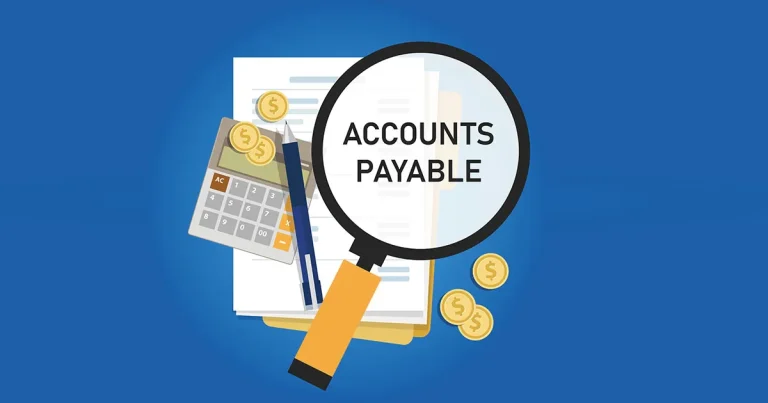For traders and entrepreneurs searching to make worthwhile actual property investments, Dubai is pretty appealing, especially when it comes to properties for sale in Dubai. One of the essential drivers of this business-friendly ecosystem is the United Arab Emirates’ hard-earned popularity for ease of doing business. The United States of America provides expedited techniques for enterprise formation, regulatory compliance, and visa applications. Furthermore, a variety of free zones in Dubai, such as Jebel Ali and Dubai International Financial Centre (DIFC), supply noteworthy advantages such as tax breaks, simplified agency creation, and one hundred percent overseas ownership. Through an examination of the assorted potentialities located in Dubai actual estate, buyers may also get admission to personnel that is each fantastically able and diversified, resulting in a dynamic fusion of abilities that propels expansion.
Business-Friendly Environment
The region’s actual property market stands out as a beacon of workability in the continuously altering world funding environment, attracting traders from all over the globe. The UAE’s business-friendly atmosphere, which is typified by its environment-friendly procedures, attracts overseas buyers who prefer income from the region’s booming actual property market. Investors are drawn to the UAE due to its streamlined tactics for business enterprise registration, regulatory compliance, and visa applications, which make it simpler for beginners to enter the market. The UAE is regularly ranked extraordinarily in the world for ease of doing business. Due to the wonderful commercial enterprise climate, traders experience extra confidence, which has the knock-on impact of riding the region’s actual property market to extraordinary ranges of success.
- Strategic position: The region is a key core for worldwide industrial activity, drawing traders searching to create a presence in a worthwhile market thanks to its strategic function as a gateway between the East and the West.
- World-Class Infrastructure: The UAE’s dedication to growing the latest infrastructure raises the charm of the region’s actual property market by way of presenting traders with the most recent conveniences and best-in-class services to return their endeavors.
- Tax Incentives: Investors looking to optimize their returns and develop their actual property holdings in the region are radically attracted to the UAE’s tax-friendly regulations, which encompass zero profit tax and low employer tax rates.
- Cultural Diversity: The dynamic multicultural local weather of the region encourages inclusion and creativity, which offers traders in the actual property enterprise a multitude of selections and thoughts to work with.
- Sustainable Practices: The region presents buyers with the hazard of taking part in eco-friendly projects, catering to those who choose to shape their investments with long-term profitability and environmental conscience. This is due to the fact that the region places a sturdy emphasis on sustainability and inexperienced initiatives.
Tax Benefits in Free Zones
Jebel Ali and Dubai International Financial Centre (DIFC) are two of the great free zones in the region that supply vast blessings to companies. With their tax exemptions, simplified techniques for placing up businesses, and the different gain of 100 percent overseas ownership, these free zones grant groups an aggressive facet when attempting to compete in a booming market. The complete advantages of working in these free zones make them an attractive choice for agencies searching to prolong their attainment in the Middle East and beyond, even if the startup expenses may additionally fluctuate depending on the form of license desired and the extent of operations.
Businesses wishing to set up shop in the region can also take advantage of a quantity of blessings furnished through the region’s tax-free zones, such as DIFC and Jebel Ali. The availability of an assorted and rather skilled group of workers is a principal benefit. The region’s cosmopolitan environment attracts expert people from all over the globe, producing a pool of bilingual and equipped employees that can help agencies in their world endeavors. This numerous genius pool encourages innovation and originality in the place of work, in addition to guaranteeing that agencies can find the perfect candidates for their unique requirements. Furthermore, the appeal of setting up a corporation in the region is expanded by using the availability of tax breaks and incentives in these free zones. Businesses can also achieve an aggressive benefit in the market, decrease operational expenses, and increase their income margins by working in these tax-free zones. The region’s fine function as a global business core additionally offers groups access to creating markets and worthwhile improvement and enlargement prospects. All matters considered, organizing an organization in one of the region’s tax-free zones is an attractive hazard for groups and entrepreneurs to take advantage of the business-friendly environment of the town and realize their full potential in the thriving Middle Eastern market.
Additional points:
- Strategic Location: Businesses might also prevail internationally thanks to the region’s close proximity to essential markets in the Middle East, Africa, and Asia, which additionally promotes commerce and connection.
- Infrastructure and Technology: The region’s free zones’ modern-day technological know-how surroundings and modern-day infrastructure promote clean employer operations.
- Networking chances: The region’s thriving enterprise neighborhood gives a wealth of networking possibilities for companies to set up really useful alliances and cooperative ventures for reciprocal development.
- Ease of Doing Business: Entrepreneurs may additionally, without difficulty, create and manipulate their organizations in the region due to its simplified procedures, low bureaucracy, and pro-business regulations.
Conclusion
In conclusion, the UAE presents a business-friendly environment with top-notch ease of doing business, really useful free area rules, a group of workers with an excessive degree of expertise, and a dynamic way of life that attracts specialists and entrepreneurs. Private Desert Safari Dubai provides the best surroundings for employer improvement and success, whether or not you are looking to begin a new task or enlarge your present operations. To get extra complete practice on leveraging these prospects, please go to https://emirates.estate/ and increase toward your company’s objectives.





 The types of student loans available include:
The types of student loans available include: Student aid for health-related degrees is called Health Professions Student Loans or HPSL. You are eligible for this aid if you’re enrolled in one of these degrees:
Student aid for health-related degrees is called Health Professions Student Loans or HPSL. You are eligible for this aid if you’re enrolled in one of these degrees: Here are the tips to manage and repay your student debts:
Here are the tips to manage and repay your student debts:
 Invoice processing is one of the main areas where AP automation can boost efficiency. The more traditional and manual approach can be tedious and labor-intensive, often leading to delays and errors.
Invoice processing is one of the main areas where AP automation can boost efficiency. The more traditional and manual approach can be tedious and labor-intensive, often leading to delays and errors. Another Crucial Area to Optimize with Your Ap Automation Software Is Your
Another Crucial Area to Optimize with Your Ap Automation Software Is Your 
 Before setting a budget, defining clear objectives for your video production is important. What do you want your video to achieve? Are you aiming to increase brand awareness or generate leads? By identifying these goals, you’ll be able to allocate resources accordingly and plan a more accurate budget to hire a
Before setting a budget, defining clear objectives for your video production is important. What do you want your video to achieve? Are you aiming to increase brand awareness or generate leads? By identifying these goals, you’ll be able to allocate resources accordingly and plan a more accurate budget to hire a  Once you have gathered quotes and compared prices from various vendors or agencies, it’s time to be realistic about the associated costs of producing a high-quality video. Consider factors such as pre-production planning, scriptwriting or storyboarding services (if needed), shooting equipment rentals or purchases (e.g., cameras, lighting), hiring actors or voice-over artists (if required), location permits, and transportation expenses.
Once you have gathered quotes and compared prices from various vendors or agencies, it’s time to be realistic about the associated costs of producing a high-quality video. Consider factors such as pre-production planning, scriptwriting or storyboarding services (if needed), shooting equipment rentals or purchases (e.g., cameras, lighting), hiring actors or voice-over artists (if required), location permits, and transportation expenses. Mistakes or unforeseen circumstances can happen in any production process. To prepare for unexpected expenses, allocate a
Mistakes or unforeseen circumstances can happen in any production process. To prepare for unexpected expenses, allocate a  Finding a balance between quality and cost is essential when budgeting for video productions. Based on the goals you defined initially, prioritize where you’re willing to invest more money while being mindful not to overspend on aspects that won’t significantly impact those goals.
Finding a balance between quality and cost is essential when budgeting for video productions. Based on the goals you defined initially, prioritize where you’re willing to invest more money while being mindful not to overspend on aspects that won’t significantly impact those goals.




 A strategic approach where the government works hand in hand with industry experts is essential. It ensures not only the currency of emergency response measures but also the alignment with economic objectives.
A strategic approach where the government works hand in hand with industry experts is essential. It ensures not only the currency of emergency response measures but also the alignment with economic objectives.



